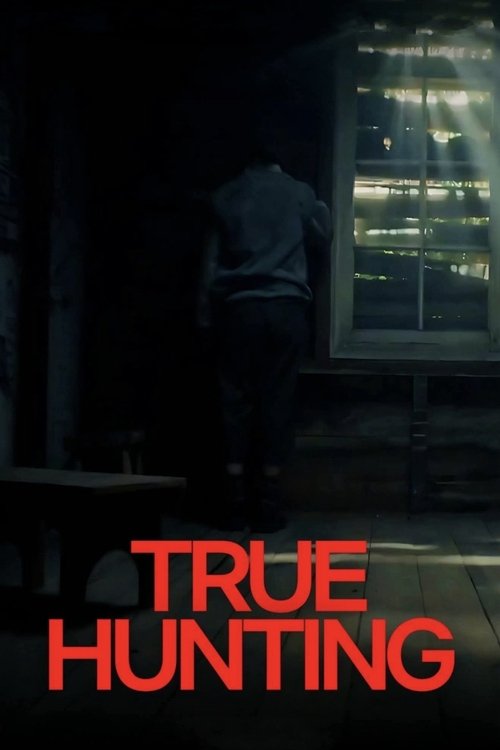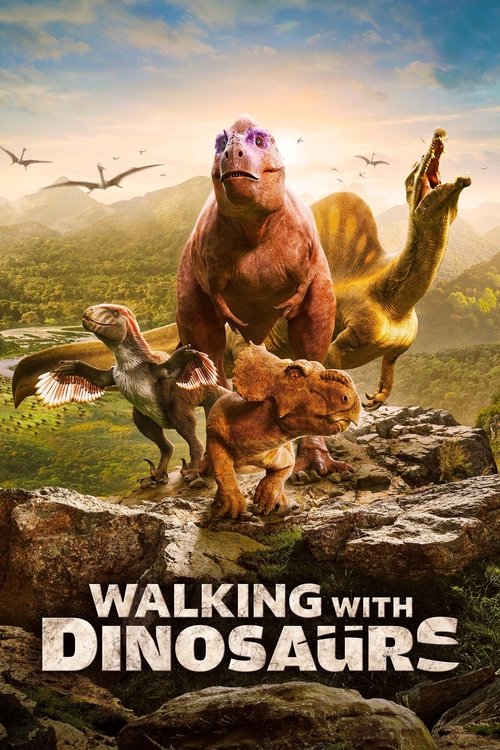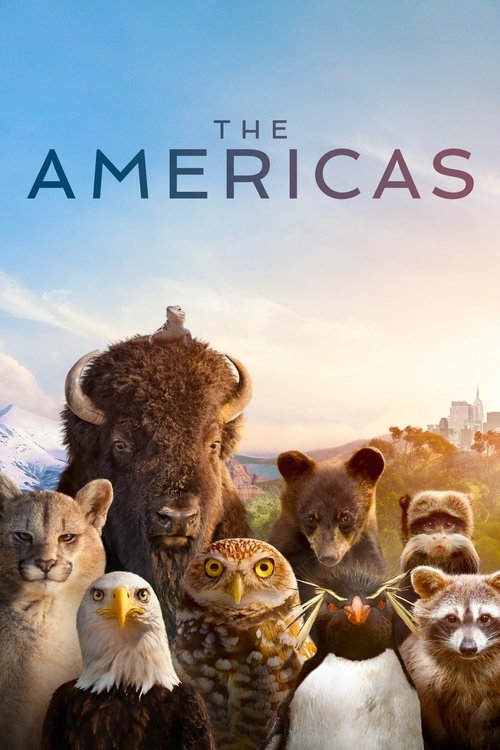
Ask Your Own Question
What is the plot?
The first episode, titled "The Orphan," opens with a young Triceratops named Clover who becomes separated from her herd after a sudden predator attack. The sequence begins with Clover grazing peacefully alongside her family when a pack of Albertosaurus approaches. The Albertosaurus stalk the herd, and during the ensuing chaos, Clover is knocked down and left behind. She struggles to stand and flees into the dense forest, alone and vulnerable.
Clover's initial escape is tense and detailed: she moves cautiously, alert to sounds and scents, avoiding open areas to evade predators. She encounters a small group of Pachyrhinosaurus but is rejected by them, emphasizing her isolation. As night falls, Clover finds shelter under a fallen tree, shivering and frightened, highlighting her vulnerability.
The next day, Clover attempts to find her way back to her herd. She navigates through a river crossing, where she narrowly escapes a lurking Gorgosaurus by hiding underwater and holding her breath until the predator leaves. This sequence is shown step by step, with the predator's slow approach, the moment Clover slips into the water, and the tense waiting period underwater.
Later, Clover encounters a juvenile Albertosaurus, who initially threatens her but then seems curious. The two engage in a cautious standoff, with the Albertosaurus circling and Clover backing away slowly. The Albertosaurus eventually loses interest and departs, allowing Clover to continue her journey.
Clover's path leads her to a valley where she witnesses a herd of Edmontosaurus being hunted by a pack of Utahraptor. The hunting sequence is detailed: the Utahraptors coordinate to isolate a weaker Edmontosaurus, one raptor knocks over a Gastonia with its head to clear the path, and the pack closes in. The Edmontosaurus herd panics and stampedes, but the Utahraptors succeed in capturing their prey. Clover watches from a distance, learning about the dangers of her environment.
As the episode progresses, Clover faces a confrontation with a lone Spinosaurus. The Spinosaurus stalks her near a riverbank, and Clover uses quick thinking to evade it by darting into thick vegetation. The Spinosaurus pursues but eventually gives up after failing to catch her. This chase is shown in detail, including the Spinosaurus's slow, deliberate movements and Clover's agile maneuvers.
Towards the end of the episode, Clover finds a small group of Triceratops, but they are wary and do not immediately accept her. She approaches slowly, showing submissive behavior, and after a tense moment, the group allows her to join. The episode closes with Clover resting among the herd, still cautious but safe for the moment.
The second episode focuses on a young adult male Spinosaurus struggling to raise his juveniles in a harsh environment. It begins with the Spinosaurus fishing in a river, using its long snout to catch fish with precision. The juveniles play nearby, learning to fish under his watchful eye. The father's protective instincts are clear as he defends them from a passing Gorgosaurus by roaring and charging, forcing the predator to retreat.
The Spinosaurus family then embarks on a journey across a dangerous landscape filled with predators and environmental hazards. The father leads the juveniles through dense forests and across rivers, teaching them survival skills. At one point, they encounter a pack of Albertosaurus. The Spinosaurus positions himself between the juveniles and the predators, engaging in a tense standoff. The Albertosaurus circle but do not attack, and after a prolonged display of dominance, they withdraw.
During the journey, one juvenile strays and is nearly caught by a Gorgosaurus. The father rushes to its rescue, engaging in a physical confrontation. The fight is described step by step: the Spinosaurus uses its size and strength to push the Gorgosaurus back, snapping its jaws and swinging its tail. The Gorgosaurus eventually retreats, wounded but alive.
The episode also shows the juveniles learning to hunt small prey, with the father demonstrating techniques such as ambush and patience. The family faces a severe storm, forcing them to seek shelter in a cave. Inside, the juveniles huddle close to their father, who remains alert to any threats.
The final scenes depict the Spinosaurus family reaching a safer area with abundant food. The father watches proudly as the juveniles successfully catch fish on their own. The episode ends with a sunset over the river, symbolizing hope and survival.
Subsequent episodes follow similar detailed narratives focusing on different dinosaur species such as Albertosaurus, Pachyrhinosaurus, and others. Each episode begins with paleontologists excavating fossils of the featured species, then transitions into a dramatized reconstruction of their lives based on the latest scientific research. The series emphasizes individual dinosaur stories, their struggles, interactions, and survival tactics in their respective environments.
Throughout the series, hunting sequences are shown with careful step-by-step detail, including stalking, ambush, chase, and kill or escape. Social behaviors such as mating displays, parental care, and territorial disputes are depicted with attention to the dinosaurs' physical and emotional states. Environmental challenges like storms, droughts, and competition for resources are integral to the narrative progression.
The series concludes with a final episode that synthesizes the various species' stories, showing the interconnectedness of the Mesozoic ecosystems and the ongoing struggle for survival among dinosaurs. The closing scenes highlight the legacy of these creatures through the fossils that paleontologists uncover, linking past and present.
Related Titles
Browse All Titles →
What is the ending?
The ending of Walking with Dinosaurs (2025, Series 1) concludes with the arrival of a migrating herd of Plateosaurus, signaling the transition from the Triassic to the Jurassic period and foreshadowing the rise of sauropods after the Triassic–Jurassic extinction event.
Expanding on this ending scene by scene:
The final episode opens by focusing on a female Coelophysis stalking a herd of Placerias near a river, seeking vulnerable prey. The Placerias herd is scattered by a female Postosuchus, a large carnivorous rauisuchian, which wounds one of the Placerias. The wounded individual is left behind as the herd flees downstream.
Meanwhile, a male cynodont lives in a burrow with his family, representing the small mammal-like reptiles of the time. As the dry season intensifies, food becomes scarce, and the Coelophysis begin to cannibalize their young. The male cynodont also resorts to hunting baby Coelophysis at night to survive.
The Postosuchus eventually dies and is consumed by a pack of Coelophysis, illustrating the harshness of the ecosystem and the shifting power dynamics among predators.
As the dry season ends, the Placerias herd embarks on a journey in search of water, highlighting the struggle for survival in a changing environment.
Finally, the wet season arrives, bringing relief. The majority of the Coelophysis, including the lead female, survive the harsh conditions. The cynodont pair successfully hatch a new clutch of eggs, symbolizing hope and continuity for their lineage.
The episode closes with the dramatic arrival of a migrating herd of Plateosaurus. This event foreshadows the dominance of sauropods in the Jurassic period following the Triassic–Jurassic extinction event, marking a pivotal shift in prehistoric life.
Regarding the fate of main characters:
- The female Coelophysis lead survives the dry season and continues her role in the ecosystem.
- The male cynodont and his family survive and reproduce, ensuring their species' persistence.
- The Postosuchus dies, consumed by Coelophysis.
- The Placerias herd endures the journey to find water, though individual fates vary.
- The Plateosaurus herd arrives as a new dominant force, setting the stage for the next era.
This detailed sequence of events portrays the cyclical nature of life and death in the Triassic ecosystem, emphasizing survival, adaptation, and the impending evolutionary shifts.
Is there a post-credit scene?
What specific plot elements are featured in the first episode of Walking with Dinosaurs Series 1 (2025)?
The first episode features a Triceratops story, focusing on the life and challenges of this dinosaur species. It includes scenes of the Triceratops' environment and interactions, with detailed CGI and narrative transitions between paleontologists and the dinosaurs themselves.
Who is the main dinosaur character in the second episode titled 'River Dragon' and what is the plot focus?
The main dinosaur character in episode two, 'River Dragon,' is a male Spinosaurus named Sobek. The plot follows Sobek and his four offspring as he tries to feed and protect them in a Cretaceous savannah environment with large rivers and lagoons, showcasing family dynamics and survival challenges.
What are some notable predator-prey interactions depicted in the series?
One notable interaction includes a male Liopleurodon, a large marine predator, snatching an Eustreptospondylus from the shore. The Liopleurodon also frightens off Hybodus sharks pursuing a mother Ophthalmosaurus, which it then partially eats. Additionally, Eustreptospondylus fights over a turtle carcass and preys on Rhamphorhynchus pterosaurs that come to eat horseshoe crab eggs.
How are juvenile dinosaurs portrayed in the series, particularly in the Spinosaurus episode?
In the Spinosaurus episode, the juveniles are portrayed as 'dangerously cute,' with the story focusing on a young adult male Spinosaurus raising them. The episode highlights the challenges of parenting and survival in a realistic paleoenvironment, with detailed animation showing the juveniles' growth and vulnerability.
What role do paleontologists play in the narrative structure of the series?
Paleontologists appear frequently throughout the series, with scenes cutting between their fieldwork and the dinosaur narratives. They are shown discovering fossils, analyzing trackways (such as those of Edmontosaurus), and providing scientific context. However, some reviews note that these segments can feel repetitive and sometimes detract from the dinosaur storytelling.






















